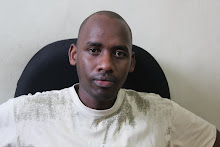[KIGALI] Agricultural researchers in Rwanda have adapted a technology widely used in the mining sector to analyse the mineral content of food crops such as beans and maize, with a view to developing more nutritious crops.
The team, from the Rwandan Agricultural Board (RAB), say the idea was inspired by a study published in the journal Plant and Soil earlier this year (21 January), which noted the use of X-ray fluorescence (XRF) analysis to determine the mineral content of soil samples.
XRF analysis generates X-rays of different colours to indicate the presence, and concentration, of elements such as iron and zinc. It is quick to display results, and each sample costs just 15 US cents to analyse – compared to US$20 for other chemical analysis technologies.
In Rwanda, beans are regarded as a near-perfect food as they contain many important nutrients, and between 22 to 30 per cent of arable land across the country is currently used to grow them, according to the RAB.
The Rwandan team used XRF to analyse three varieties of bio-fortified beans – climbing, bush and snap beans. They analysed 15 samples in total, and found four were particularly rich in mineral nutrients such as iron and zinc, according to Augustine Musoni, a senior researcher at the RAB.
"This is a step forward in [reducing] malnutrition while improving the lives of smallholder farmers," Musoni told SciDev.Net.
Iron deficiency in food crops can inhibit physical and mental development in children, and increase the risk of women dying in childbirth, Musoni added.
The Plant and Soil study was funded by HarvestPlus, which is part of the Agriculture for Improved Nutrition and Health programme of the Consultative Group on International Agricultural Research (CGIAR).
HarvestPlus has formed partnerships with research institutes in Bangladesh, Mexico and India to make further use of the technology in crops like rice and pearl millet. It has set up XRF facilities in these institutes and trained local scientists to use them..
The main purpose of the new technology according to Tiwirai Lister Katsvairo, the Rwanda country representative for HarvestPlus, is to deliver nutritious staple food crops to reduce "hidden hunger" — the lack of dietary vitamins and minerals, adding that more than half of Rwanda's children under five, and a third of the female population, are anaemic.
Daphrose Gahakwa, deputy director-general of the RAB said that XRF technology would be a beneficial method of testing mineral content in seeds. The challenge in delivering this innovation, she said, was how to deliver those benefits to remote areas of the country.
http://www.scidev.net/en/health/nutrition/news/x-ray-technology-harnessed-to-grow-more-nutritious-crops.html
The team, from the Rwandan Agricultural Board (RAB), say the idea was inspired by a study published in the journal Plant and Soil earlier this year (21 January), which noted the use of X-ray fluorescence (XRF) analysis to determine the mineral content of soil samples.
XRF analysis generates X-rays of different colours to indicate the presence, and concentration, of elements such as iron and zinc. It is quick to display results, and each sample costs just 15 US cents to analyse – compared to US$20 for other chemical analysis technologies.
In Rwanda, beans are regarded as a near-perfect food as they contain many important nutrients, and between 22 to 30 per cent of arable land across the country is currently used to grow them, according to the RAB.
The Rwandan team used XRF to analyse three varieties of bio-fortified beans – climbing, bush and snap beans. They analysed 15 samples in total, and found four were particularly rich in mineral nutrients such as iron and zinc, according to Augustine Musoni, a senior researcher at the RAB.
"This is a step forward in [reducing] malnutrition while improving the lives of smallholder farmers," Musoni told SciDev.Net.
Iron deficiency in food crops can inhibit physical and mental development in children, and increase the risk of women dying in childbirth, Musoni added.
The Plant and Soil study was funded by HarvestPlus, which is part of the Agriculture for Improved Nutrition and Health programme of the Consultative Group on International Agricultural Research (CGIAR).
HarvestPlus has formed partnerships with research institutes in Bangladesh, Mexico and India to make further use of the technology in crops like rice and pearl millet. It has set up XRF facilities in these institutes and trained local scientists to use them..
The main purpose of the new technology according to Tiwirai Lister Katsvairo, the Rwanda country representative for HarvestPlus, is to deliver nutritious staple food crops to reduce "hidden hunger" — the lack of dietary vitamins and minerals, adding that more than half of Rwanda's children under five, and a third of the female population, are anaemic.
Daphrose Gahakwa, deputy director-general of the RAB said that XRF technology would be a beneficial method of testing mineral content in seeds. The challenge in delivering this innovation, she said, was how to deliver those benefits to remote areas of the country.
http://www.scidev.net/en/health/nutrition/news/x-ray-technology-harnessed-to-grow-more-nutritious-crops.html


No comments:
Post a Comment